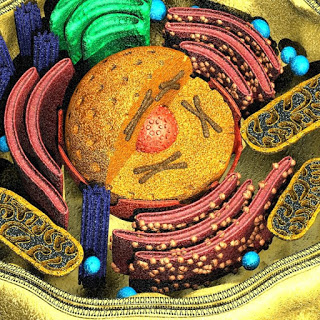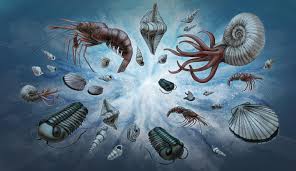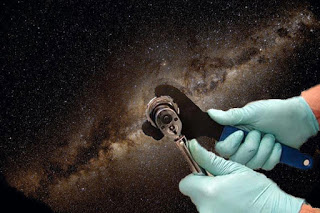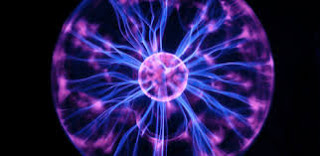A single letter of the alphabet is specific, but not complex. Scatter thousands of letters randomly across a table, and you have complexity without specificity. A poem by Pablo Neruda[1], on the other hand, embodies both: it is richly complex and precisely specific. In much the same way, proteins are both complex and specific—they require a precise sequence of amino acids to function properly. Now, let us explore another captivating idea: irreducible complexity.
Michael Behe[2], the originator of the concept, defines an irreducible system as one composed of several well-coordinated parts that interact to perform a fundamental function. If even a single component is removed, the entire system ceases to operate. A classic example is the inner workings of a watch, which depend on the seamless interaction of pinions, cogwheels, gears, and springs. If any one of these elements is taken away, the mechanism fails.
The core idea behind irreducible complexity is that all essential parts must be present simultaneously. None of them can emerge gradually. For instance, it is not plausible to assume a pinion began with just two teeth and “evolved” over time to reach the forty-eight teeth required for functionality—nor that the rest of the mechanism patiently awaited its final form. How would that pinion “know” it needed forty-eight teeth? If it did possess such knowledge, wouldn’t that suggest a form of self-awareness or intentionality?
Such a “sense of purpose” cannot be generated by random, unguided processes. Rather, it implies direction from an external source. A clock can only function as such when all its internal components are simultaneously operational. There is no room for gradual assembly in its core mechanism. However, non-essential features—like the glass face or wristband—could develop gradually without affecting the clock’s primary purpose: timekeeping.
An irreducible system consists of the minimum set of interdependent parts necessary to perform its function. Remove one, and the system fails entirely.
In biology, we also find compelling examples of irreducible systems—such as the bacterial flagellum, the visual system, the blood clotting cascade, the intracellular protein synthesis machinery, and the immune system among others.
If I were to show you a diagram of the bacterial flagellum without context and ask for your interpretation, you might conclude that it is a schematic of an electric motor from a ship. The resemblance is striking. Both systems feature a central shaft, elbow joints, rings, gears, a rotor, a stator[3], bushings, ball bearings, and a propeller—though in the case of the flagellum, the propeller takes the form of a whip-like tail.
The capabilities of this biological motor are nothing short of astounding. The flagellum can spin between 6,000 and 17,000 revolutions per minute, propelling the bacterium at speeds of up to sixty body lengths per second. To put this into perspective, the cheetah—the fastest land animal—reaches only about twenty-five body lengths per second. Even more impressively, the flagellum can reverse its rotational direction in less than one one-hundred-thousandth of a second.
The motor’s mechanical portion is constructed from at least twenty distinct proteins, while an additional thirty proteins are required to facilitate its function—pumping ions through rings and coordinating movement. All this intricate machinery is housed within a structure that measures just twenty millionths of a millimeter.
As with a ship’s motor, the removal of any single component renders the entire system inoperable. Every part must be present and functional simultaneously for locomotion to occur. This raises a fundamental question: how could such a finely tuned system evolve gradually? How does a gear evolve piece by piece? Can we honestly say that chance alone is a sufficient explanation for the origin of a mechanism so precisely engineered?
Just as no one would attribute the creation of a ship’s electric motor to random processes, it seems reasonable to ask whether the bacterial flagellum is not also the result of intentional design—an unmistakable sign of a purposeful designer.
Another compelling example of irreducible complexity is the blood coagulation system. When a blood vessel is injured, a multi-phase defense mechanism is rapidly initiated to prevent excessive blood loss. First, the vessel walls constrict to minimize blood flow to the affected area. Next, platelets—specialized blood cells—adhere to the site of injury and begin spreading across the vessel’s inner surface. Simultaneously, tiny granules within the platelets release chemical signals that attract additional platelets, forming what is known as a platelet plug.
On the surface of these activated platelets, a series of complex biochemical reactions—collectively called the coagulation cascade—unfolds. This cascade involves a tightly regulated sequence of steps that culminate in the production of a fibrin clot. Fibrin acts like a biological net, stabilizing the plug and effectively sealing the wound to stop bleeding.
Seventeen distinct proteins are involved in this cascade, each one activated in a precise sequence to trigger the next step in the process. Remarkably, these coagulation factors normally circulate in the blood in an inactive form, poised to act instantly when needed. The coordination required is extraordinary—comparable to a sophisticated computational system. It is as if an internal “computer” analyzes vast amounts of biological data to determine the exact moment and location for each protein’s activation. All this information is coded in our dna, which serves as the blueprint for this entire life-preserving mechanism.
This raises a profound question: How could such a system evolve gradually, step by step? How does it “know” the exact sequence of actions required to function flawlessly? Is it reasonable to attribute the origin of such a coordinated, life-critical process to random chance?
Or, like any well-orchestrated system, does it more plausibly point to purposeful design—a system crafted by an intelligent designer with a specific and vital function in mind?
Critics of irreducible complexity often argue that if a component—such as a pinion—were missing a tooth, the resulting device might still serve another function, such as acting as a paperweight. But this line of reasoning inadvertently reinforces the core argument of irreducible complexity: for a clock to function as a clock, each of its parts must be fully formed and properly integrated. A pinion with a missing tooth in a watch does not tell time; it merely occupies space. The moment the watch loses its ability to perform its intended function; it ceases to be a timepiece in any meaningful sense.
This leads to a deeper question: what would “motivate” a malformed or non-functional component to continue evolving toward a fully operational mechanism? How could an incomplete device—serving no relevant function—”know” what it is supposed to become? If such an object were to resume an evolutionary path toward functionality, would that not imply a kind of self-awareness or an inherent “sense of purpose”? These are attributes we typically associate with intention, not randomness.
The continued advancement of electron microscopy, now capable of magnifying up to ten million times, has opened an unprecedented window into the internal architecture of cells—both bacterial and human. What we see under these lenses is nothing short of astonishing: elaborate, highly regulated systems working in perfect harmony, like miniature factories. Inside each cell, vast assembly lines operate with precision, guided by billions of instructions encoded in a molecular alphabet—DNA. It is a level of sophistication that would make any computer engineer envious.
Consider the construction of something as common as a cell phone. Its functionality depends on code—meticulously written, interpreted, and executed. No one would seriously propose that such a device could be the product of unguided chance. And yet, the inner workings of a single living cell far exceed the complexity of any manufactured technology.
Charles Darwin himself wrote:
If it could be demonstrated that any complex organ existed, which could not possibly have been formed by numerous, successive, slight modifications, my theory would absolutely break down. But I can find no such case[4].
However, with the extraordinary insights provided by modern molecular biology, we have begun to uncover precisely such cases. Irreducibly complex systems—beyond the reach of gradual, step-by-step evolution—are not theoretical anymore. They are observable, real, and increasingly impossible to ignore.
[1]Pablo Neruda, the pseudonym of Ricardo Eliécer Neftalí Reyes Basoalto (Parral, July 12, 1904 – Santiago de Chile, September 23, 1973), was a Chilean poet and recipient of the Nobel Prize in Literature in 1971. He is regarded as one of the most prominent and influential literary figures of the 20th century. Gabriel García Márquez once described him as “the greatest poet of the 20th century in any language.”
[2]Michael J. Behe (born January 18, 1952, in Altoona, Pennsylvania) is an American biochemist known for advocating intelligent design. He is a professor of biochemistry at Lehigh University in Pennsylvania and a senior fellow at the Discovery Institute’s Center for Science and Culture.
[3]The stator is the stationary component of a rotating machine and one of the two essential elements for transmitting power in electric motors or generating electric current in generators. Its counterpart, the rotor, is the moving part that interacts with the stator to perform these functions.
[4]On The Origin of Species, Chapter vi.







